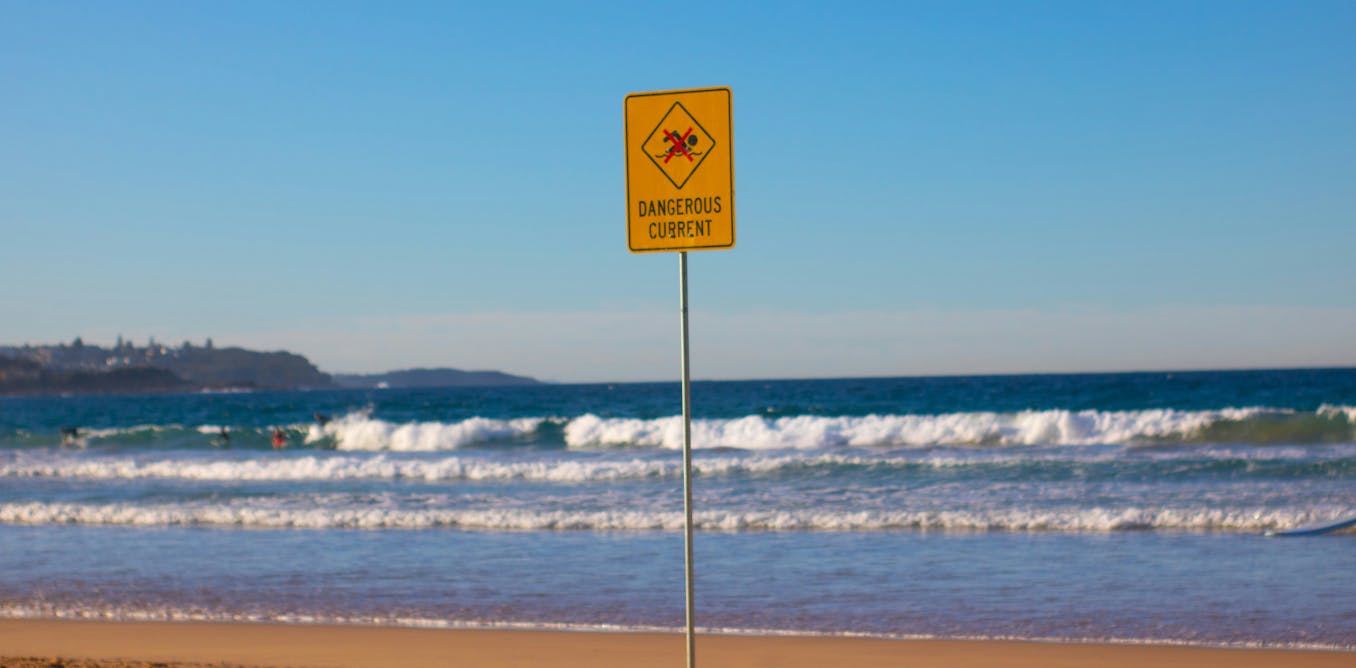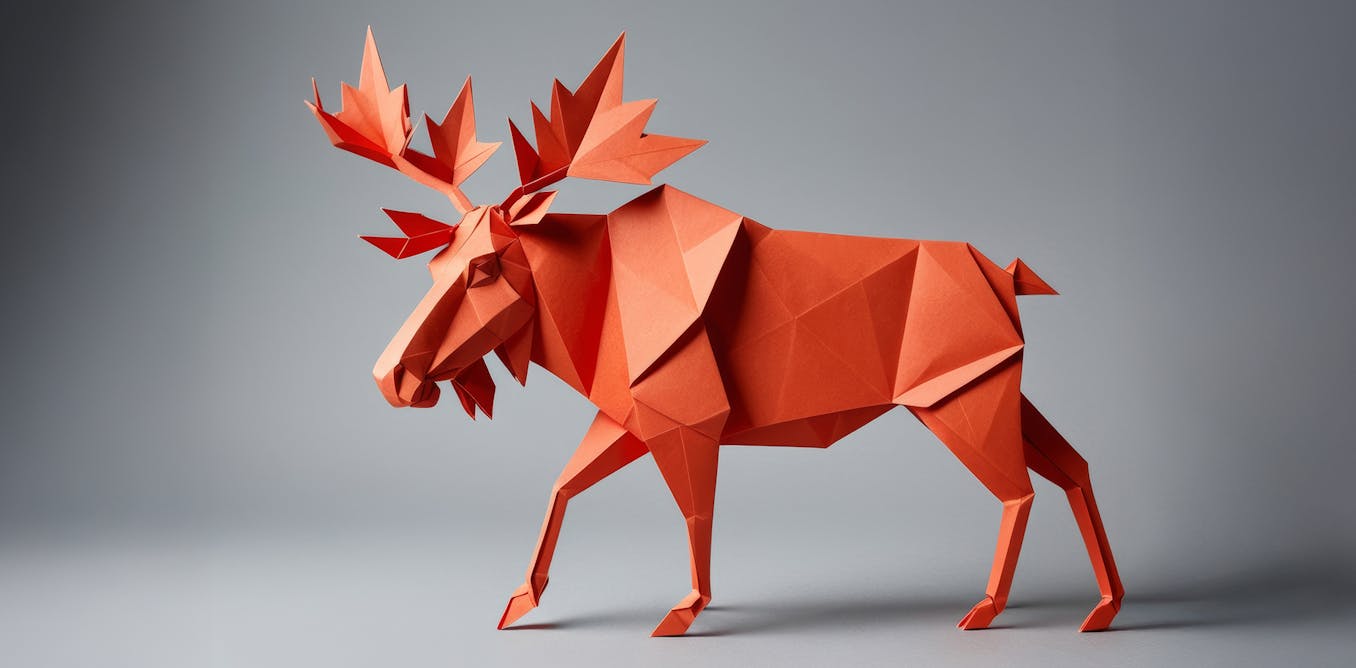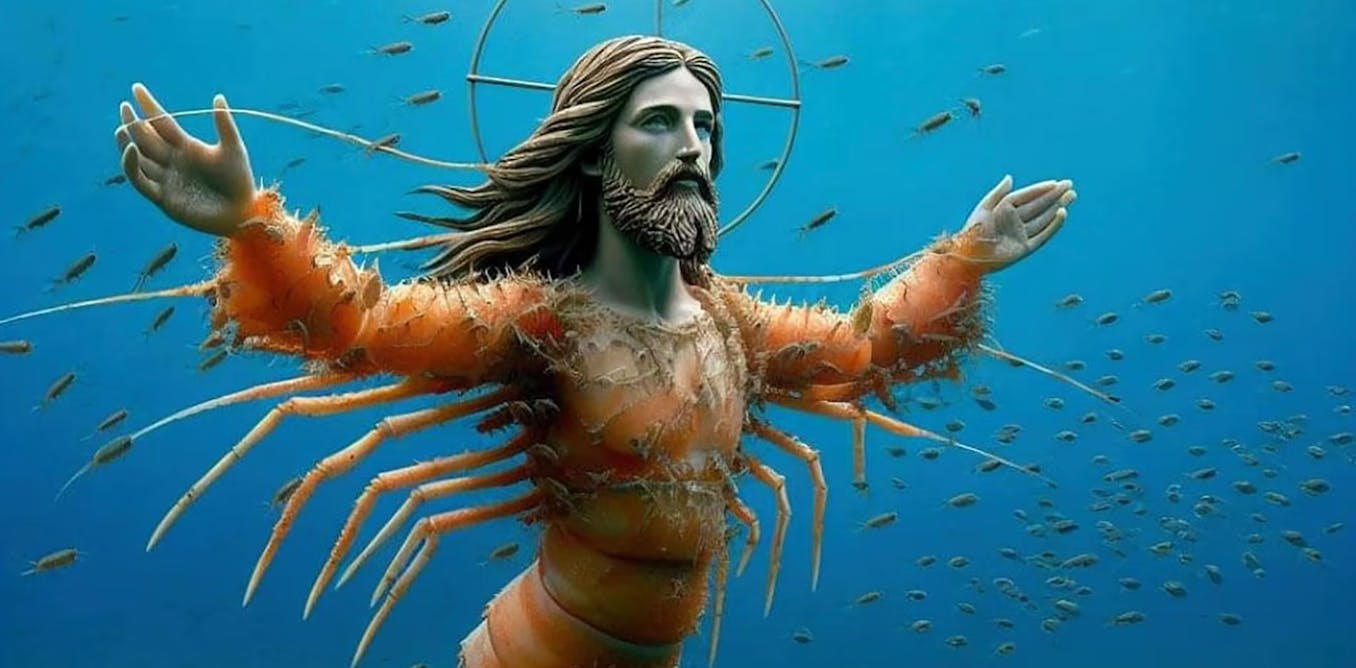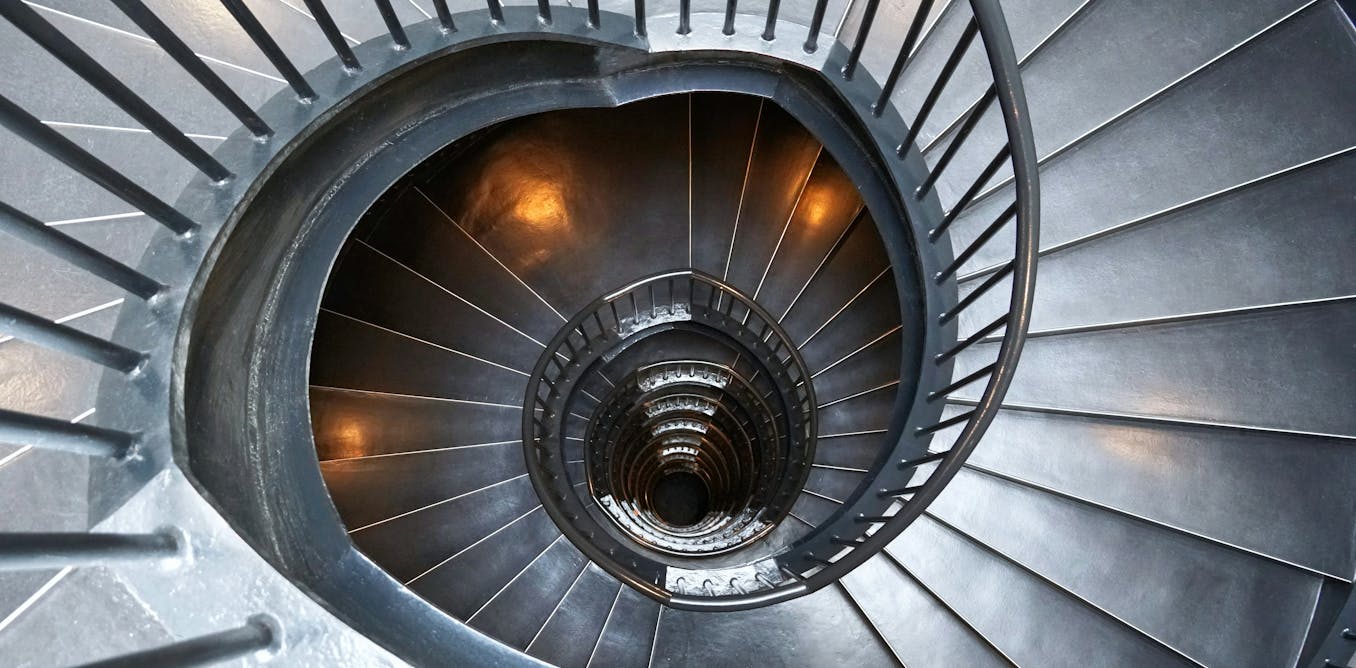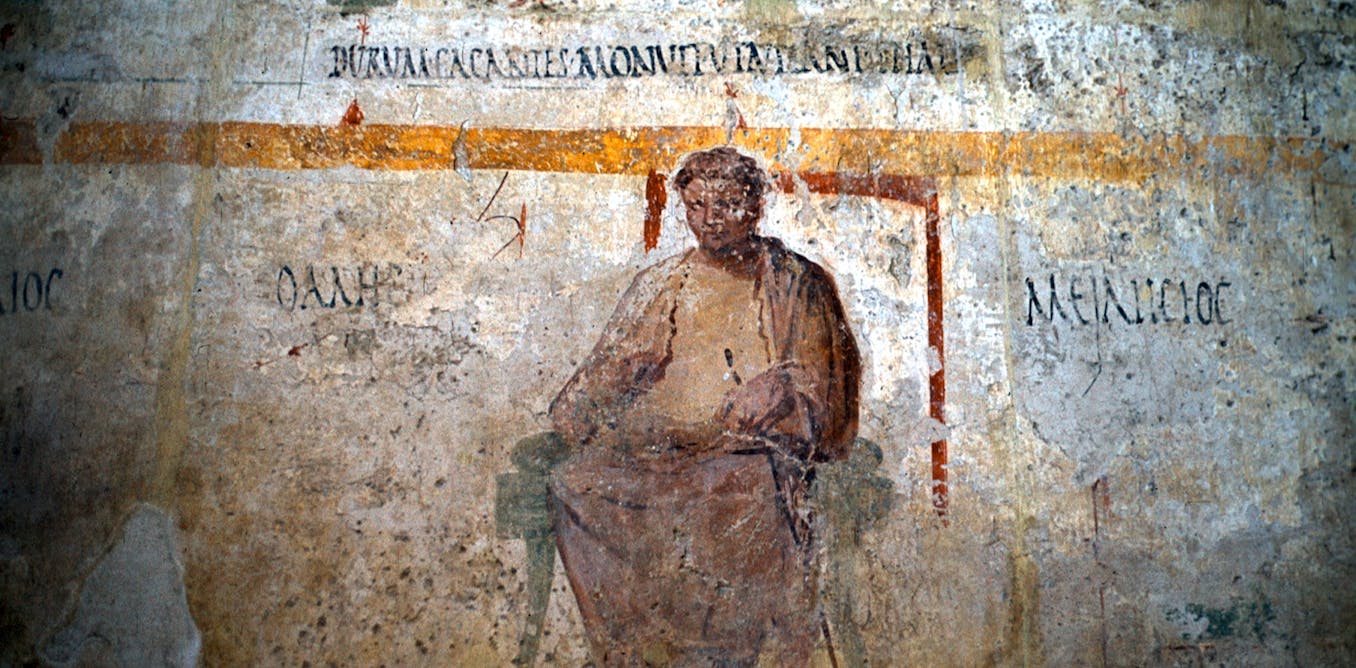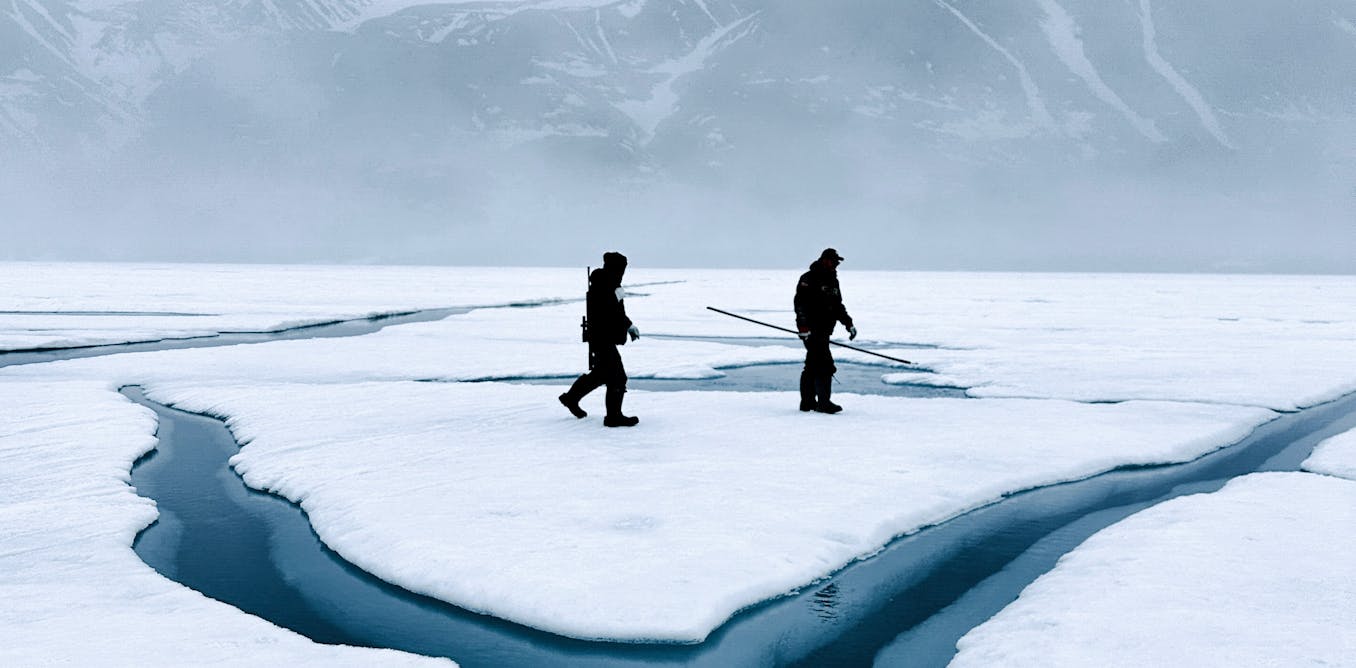The video titled “What Was Prehistoric Earth Like?” takes us on a journey back millions of years ago when Earth was a very different place. In the prehistoric times, all the continents were fused into one supercontinent, teaming with life both beautiful and terrifying. Before the dinosaurs, there were other giant creatures ruling the Earth, such as the Permian period with epic landscapes and diverse plant and animal life.
The video explores the changes Earth went through over millions of years, from the formation of Pangia to the rise and fall of different species like the giant insects, amphibians, and reptiles. It also delves into the catastrophic events like the Great Dying, the most devastating mass extinction event in Earth’s history.
The exploration of prehistoric times gives us a glimpse into the incredible species that roamed our planet, such as the Dimetrodon, Therapsids, and the codon, as well as the environmental changes that shaped the Earth’s landscape. The video prompts us to imagine what life would be like if these prehistoric creatures were still alive today, roaming our modern world and how it would impact our existence.
Watch the video by What If
Video Transcript
Millions of years ago Earth looked very different all the continents were fused into one teaming with life both beautiful and terrifying when you think of prehistoric times you might picture a T-Rex rampaging through the jungle with its razor sharp teeth but even before the dinosaurs there were other giant creatures ruling the Earth
Yeah welcome to the peran period this epic started 300 million years ago back then our planet had one supercontinent Pangia surrounded by a world ocean called panthalassa the perian period began at the end of an ice age when temperatures were much cooler than today then during
Early perian days Earth warmed to a lush environment with a diversity of plants and a rapid evolution of insect and animal life only as you probably know everything is Ever Changing on our Blue Marble over the next 50 million years Earth kept growing hotter and drier eventually the most deadly event in the
History of our planet wiped out nearly everything that ever lived here scientists call this event the Great great dying and it was the most catastrophic mass extinction event the Earth has ever seen and the Earth has seen five of them but before we get to
All this Doom and Gloom let me take you on an Epic Journey back in time here in the perian period some of the most incredible species that roamed our young Planet are about to emerge all around the United States people have been taking part in an effort to reforest parts of the country
Why because it’s helping to combat climate change trees provide a ton of benefits from food to shelter to oxygen but one of the most surprising benefits is that they’re helping cool down the rising temperatures we’ve been experiencing thanks to reforestation efforts trees cool parts of the eastern
US by 1 to 2° C each year that might sound small but during the hotter days of summer you’ll definitely notice how much trees are helping you cool down down and the Biden Administration wants to help continue this momentum they’ve set up the American climate Corp the ACC
Which will hire and train 20,000 people for careers in clean energy conservation and climate resistance remember we all play a part in the change we want to see so keep encouraging your leaders to push for initiatives like reforestation and the ACC these are the things that will have a tremendous impact on our
Future if you could time travel nearly 300 million years into the past you’d land smack dab in the middle of the superc continent Pangia Earth’s smaller continents would have just finished colliding with each other to form this enormous land mass taking up onethird of the planet’s surface there was likely less oxygen in
The air than there is now but you still might be able to breathe oh and bring a jacket because it would likely be chilly with some areas averaging no more than a Brisk 4° C but don’t worry things will soon start heating up by the end of the early peran
The Ice Age was on its way out and Pangia was becoming a lush world plants and animals started to thrive this was a volcanic world violent eruptions changed the climate shaped the landscape and paved the way for evolution when giant swamp forests began drying out plant life had to adapt and
So 290 million years ago Earth saw the very first seed bearing plants called gymnosperms these plants carried seeds on their cones and they spread across the superc continent like wildfire the ancient evergreen forest of the the early peran was hiding something familiar just like today you could find
Cicas and beetles piercing and sucking on the plants and the cutest of them all cockroaches only these weren’t the Cockroaches you know today these prehistoric Vermin were gigantic the size of birds but despite their size cockroaches never ruled prehistoric land and that’s good news am I right no no something
Much more fascinating was roaming Pangia the now extinct ancestor of primitive mammals dimetrodon this animal was as fascinating as it was terrifying encountering a dimetrodon would be quite a sight to behold this ancient lizard grew to 5 m long and weighed 225 kg it had a large sail running down its spine
Scientists think this sale helped the reptile regulate its body temperature soaking up warmth during the daytime and dissipating excess heat during the cooler nights it would walk toward you like a crocodile and act like a total Menace dimetrodon was an apex predator of its time watch out for a mix of sharp
And flat teeth that would slice you open and grind you up in the middle perian period other mammal-like reptiles took over the planet therapsids they had strong jaws with sharp teeth and a somewhat upright stance thanks to their legs being situated underneath their bodies therapsid reptiles varied from the 5 m
Long likely omnivorous dudosa surus to the five times smaller meing lops you could meet plenty more thorpes if you stuck around for another 20 million years during the middle perian period Earth kept getting hotter the average global temperature on Pangia grew to about 25° C and volcanoes were spitting
Greenhouse gases out into the atmosphere due to the changing climate sea levels were shifting but marine life found ways to thrive if you were to take a dip in the prehistoric super ocean you’d be swimming alongside ancient sharks and bony primitive fish many more complex marine species came and went as the
Environment kept changing in the late peran period you could have a friendly encounter with another reptile lystrosaurus these looked like a cross between a lizard and a pig but unlike all the scary prehistoric mon monsters out there lystrosaurus was a herbivore it was just 1 M long and had powerful
Front legs for burrowing soon another cute mamal likee lizard evolved the codon the codon looked like a giant rodent it was about 1 M long had whiskers and fed on small animals and insects now during this time something bad was brewing in the air a large amount of Volcan activity was displacing
Oxygen from the atmosphere scientists think there was as little as 10% oxygen in the air compare that to 21% today you’d have a hard time breathing in that environment and the temperature kept rising and Rising with an average temperature of about 28° C this Lush prehistoric world was turning into an oven
All good things must come to an end and sadly this period came to a particularly brutal one about 252 million years ago about 90% of all plant and animal life was wiped out this tragic moment is called the Great dying and it was Earth’s most devastating mass extinction event scientists still debate what
Caused this catastrophic Extinction most theories suggest it was the result of explosive volcanic activity as huge volcanic eruptions swept the continent massive amounts of Ash were Unleashed into the atmosphere so much Ash that it blocked out most if not all of the incoming sunlight and with no sunlight global temperatures dropped suddenly
Plants couldn’t perform their photosynthetic processes and died off and without plants the very basis of their food chain animals soon followed things got worse before they got better because of all the carbon dioxide emitted during the volcanic eruptions global temperatures rose again and not just to where they were but
Higher much higher and this caused the super ocean to lose most of its oxygen and unable to breathe a majority of the peran sea animals perished eventually over 95% of marine species and More than 70% of land animals became extinct you’ve traveled over 500 million years into the past to experience some
Of the most dangerous seas and alien organisms ever to exist on Earth welcome to the Cambrian Period what would Earth Earth look like compared to how it does now what could you eat to survive and what kind of creatures would you need to watch out for this is what if and here’s what
Would happen if you lived in the Cambrian Period traveling 500 million years into the past well the first thing you should probably do is get your bearings unfortunately for you the Earth you knew so well is gone or rather it’s yet to come into existence you’d find yourself on a
Planet with shallow Seas covering most of its surface and in the southern hemisphere where you’re standing right now the supercontinent rodinia is just starting to break apart there’s gondwana the land mass that will go on to include South America Africa and Australia lorentia which includes most of North
America Plus Siberia and baltica which span across what you might recognize as the eventual Scandinavia Eastern Europe and parts of Russia you wouldn’t really recognize anything though no familiar mountain peaks or Lush Greenery it would mostly be Barren except for mosses and algae spread across the landscape but as
You made your way over to the Ocean’s Edge you’d soon discover an explosion of Life thriving on this early Earth but be careful some of it could kill you just below the ocean’s surface you’d be treated to a glimpse of a time when life on Earth was diversifying faster than
Ever before you’ve arrived right in the middle of the Cambrian explosion this relatively short stretch of time between 530 and 540 million years ago saw a boom of new organisms scuttling across the seafloor you’d find alien looking Critters that at first sight might scare you right out
Of the water but don’t worry they won’t harm you these are trilobites ancient creatures that scavenged around from tropical shallows to icy waters near the poles with their spiny Limbs and wide circular mouths you could watch them search for a buffet of worms and algae
To feed on at this point you’d start to notice that breathing is a little more difficult on Earth than it is in our day and age that’s because the atmosphere’s oxygen levels are significantly lower than what you’re used to even down at sea level it would feel like you were at
A much higher altitude and since the ozone layer has yet to fully develop you’d also have to do your best to Shield yourself from the much stronger UV rays pounding down on you from the Sun I hope you brought some sunscreen because you won’t find any here for a
Long long long time by now you’d be getting hungry especially after watching those trilo bites Munch down on all their yummy snacks and you’d start to wonder what on Earth you’d be able to eat in the Cambrian Period well your best bet would be to stick close to the sea but be careful
Don’t reach for those worms too quickly some of the food sources you’d find could be highly toxic you’d be consuming strange new bacterias that your body body isn’t used to so brace yourself for an upset stomach or something even worse and while you’re out hunting for
Dinner will keep an eye out for larger Predators lurking in the shadows but don’t worry too much a lot of what you’ll see are organisms like the anomalocaridids these shrimp-like animals could grow up to 38 CM so they wouldn’t do you much harm you’d actually
Be the apex predator at the top of the prehistoric food chain as your days stuck in the Cambrian Period turn into weeks you’ll continue to struggle with adapting to your new environment the low oxygen levels would make even the simplest physical tasks more difficult and without fruits veggies and your
Usual proteins you could be headed toward malnutrition now despite all the challenges you’d be witnessing one of the most significant eras of life’s development on this planet all those creatures in the sea will go on to evolve and be the foundation for much of Life as We Know
It millions of years ago the earth looked very different a huge land mass called Pangia covered about a third of our planet but about 175 million years ago the earth broke up into continents and formed the world we know today what if that had never happened where would your country be
Located and how different would your life be this is what if and here’s what would happen if Pangia had never broken apart if Pangia existed today in theory you could drive from California to England since they’d both be part of the same land mass and although you may only think of
Pangia as just another piece of land it would be much more than that it’s played an integral part in human and animal Evolution if Pangia had not broken apart you may not be here today but let’s assume it didn’t and that we survived and evolved to be the
People we are today what would the Earth be like first let’s talk about where your country would be located North America would be right here Europe would be a lot closer just to the East Asia would be up north by Russia and Antarctica would remain down South India and Australia would be further
South connected to Antarctica these countries that used to have hot climates would now be cold covered with snow and ice and those wouldn’t be the only environmental changes region in the middle of Pangia would have Lush rainforests along their borders and as you travel further Inland it would become a
Desert this would be due to Pia’s land mass being so large rain which comes from the ocean wouldn’t be able to travel far enough Inland leaving parts of Pangia practically uninhabitable by humans and other species and weather up north would be different too with Russia being much warmer than it is today
But the weather wouldn’t be the only thing that would change on Pangia we might have less diversity of species the species at the top of the food chain today would most likely remain there but some of today’s animals would not exist in Pangia they wouldn’t have the chance to
Evolve fewer animals might make it easier to travel and on this modern version of Pangia you’d probably want to do a lot of it luckily you wouldn’t have to go far if you if you lived in Florida you’d be right next to the Caribbean islands Venezuela and Brazil you could
Visit all of these in a single day and if you lived in Nova Scotia Canada you’d be driving distance from France England and Germany although this might sound like fun a lot of countries would have new neighbors which could cause some serious issues for some places like the United
States which used to have oceans on both sides of the country would now have Africa on its East Coast if these countries didn’t get along things could get ugly how much easier would it be to start a war in another country if they were just a short drive away transporting weapons people and
Supplies would all be faster and cheaper if certain countries were right next to each other or none of this would happen and the entire world would be more unified than ever with all of us sharing the same land mass maybe we’d learn to treat each other just a bit better than what
We do now human beings have existed for 300,000 years and have managed to live in many unstable environments we’ve survived ice ages devastating pandemics and world wars but how would we fare even further back in time what about 400 million years ago when deadly marine life dominated our oceans and creatures on
Land were practically non-existent let’s imagine your what if time machine happened to break down right at this moment trapping you in the devonian period What would life be like where would you live and how long could you last this is what if and here’s what would happen if you lived in the devonian Period Stroke of Luck our time machine stops you on land at this point in time 85% of the Earth was comprised of ocean only two supercontinents existed 600 million years ago gondwana and larusa gondwana had a massive mountain range similar to the Himalayas which slowly eroded washing sediments into the
Ocean these sediments provided nutrients that allowed marine life to flourish giving rise to the devonian period okay enough background our first step for survival is to seek shelter in the early devonian period trees and plants had not yet evolved but there’s lots of moss the land was Barren
Mars-like and surrounded by water you might need to get a little creative to build shelter if humans actually evolved in this period they would likely be naked with little material to make clothes or maybe we would develop a new fashion line made of moss seashells and Fishbones ooh la how devoni and
Chic speaking of Fishbones you’d want to be very careful about fishing many scary sea creatures would be happy to eat you like placoderms a species of armored fish with huge sharp Jaws that could easily make you bite-sized in the early devonian period placoderms were the apex predator and would grow up to 10
M let’s say you got lucky and actually caught a fish without being eaten yourself in the process how would you cook it with no trees for fuel you’d have to find some very dry moss and start rubbing some rocks together luckily the climate was pretty warm meaning you you wouldn’t freeze at
Night but with very little kindling available you might be better off sticking to a raw diet of mollusks and other early arthropods you’d also have to move around a lot to keep finding these Critters so be prepared to do a lot of walking H I can see you’re getting a
Little tired and bored of existing out there let’s fast forward another 40 million years toward the late devonian period this this period is also known as the devonian extinction but don’t worry it could actually be a really good time for you Fearless traveler since by this
Point almost 79 to 87% of all existing species were wiped out but what could cause such a catastrophe scientists believe it was the evolution of plants vascular plants began dominating the environment including trees Ferns and flowering plants their roots broke up the rocky ground and released nutrients and
Minerals in the water these nutrients fed algae which multiplied rapidly and produced greedy bacteria that fed on oxygen many regions of the ocean became anoxic zones and much of the marine life died off due to the lack of oxygen and with more air in the atmosphere some sea
Creatures slowly adapted and made their way to shore so you can breathe easier no KN there are less predators in the water but look out for your new neighbors on land these land dwellers known as lobins were the early ancestors of amphibians and all four-legged vertebrates in fact
The devonian period got its name from the fossils of lopin found in Devon England in 2004 a lopin fossil was found in the Canadian Arctic known as the talic which is considered to be the species between between fish and land dwelling tetrapod it had a crocodil like
Head bony fins sharp teeth and a flat body almost 3 m long its fins had partial wrists allowing it to crawl on land so if I were you I would quickly hide if I saw a talic coming my way the other dominant species were cartilagenous fish with skeletons covered in you guessed it
Cartilage these are the ancestors of sharks and Rays but you don’t have to worry about sharks oh no there’s something far bigger and scarier I’d keep my distance if you happen to see a Dunkle osus swimming around these were the deadliest predators of the devonian age with thick
Bony plates covering their skulls and razor sharp Jaws some would grow up to 10 m in length their jaws were strong enough to Chomp right through another Dunkleosteus with few fish left because of plants hogging the oxygen these placoderms were starving and desperate enough to eat each other so be very
Careful where you bathe with more trees and plants emerging in your environment you could finally create some helpful tools like Spears fishing hooks and rope you could improve your diet and maybe become a vegetarian and you could fashion some new clothes that aren’t so irritatingly itchy by the late devonian
Period you might even be able to build yourself a treehouse in the arch opterus the first tree on earth which grew up to 30 m tall with a trunk 3 m wide how cool would it be to see a real life T-Rex if only that one fatal asteroid never hit
The Earth would dinosaurs still be alive today would they have evolved would humans have survived this long could we ever learn to coexist this is what if and here’s what would happen if dinosaurs never went extinct until 66 million years ago dinosaurs of all shapes and sizes roam the Earth intelligent adaptable and
Sometimes weighing as much as two jet planes it’s hard to believe that it only took one rock to wipe them all out of course this was no ordinary Rock the asteroid that took out the dinosaurs was 9 M wide and hit Earth with the destructive force of 10 billion hirosima
Bombs the radioactive shock wave obliterated everything for hundreds of miles in every direction and 75% of all species on Earth went extinct if that asteroid had hit just a little earlier a little later or even a few miles off course we would be living in a very different world
Today the rock that killed the dinosaurs struck the shallow Waters of Mexico’s Yucatan Peninsula had it landed a little farther farther off the coast in a deeper part of the ocean the water might have absorbed some of the blast along with its devastating effects on the atmosphere but even if the asteroid
Missed the Earth dinosaurs would have to survive several significant Global events in order to make it to the present day 55 million years ago temperatures Rose the climate was 8° hotter than it is today rainforests sprouted and vegetation flourished herbivores would have adapted and thrived but they’d have started to look
A little different the plants of this period were less nutritious and easier to digest meaning dinosaurs would likely shrink in size since their new diet wouldn’t have as much energy roughly 20 million years after that South America and Antarctica split creating a cooler and drier world climate during this period long-legged fast-moving dinosaurs
Would have evolved to travel the huge grasslands stretching out across the globe compared to mammals of this period dinosaurs held significant advantages such as having more teeth and better eyesight considering the dinosaurs were already so advanced scientists wonder whether mammals would have evolved at all if dinosaurs hadn’t gotone extinct
It’s likely that the big animals we know today would have been prey to dinosaurs but remember humans evolved alongside woolly mammoth and saber-tooth cats while those species didn’t survive the ice ages of 2.6 million years ago given the evolutionary traits of some dinosaurs there’s a chance they might
Have persisted but what about us could we handle freezing temperatures and huge terrifyingly vicious predators they say running keeps the body warm but that might also make you taste better in an alternate universe if we did survive alongside these Prehistoric Beasts it’s possible we could see a re live T-Rex on
A protected Reserve not unlike Jurassic Park human population growth and excessive hunting would have driven larger dinosaurs to near Extinction today they would most certainly be an endangered species but those that shrank and adapted over millions of years could coexist peacefully Among Us in fact some actually do where do you think pigeons
Came from it’s hard to believe the birds were once the size of biplanes but then again it’s hard to believe that with a slight twist of fate we might have walked with Dinosaurs or we might have become dinosaur chow and not have evolved at all what was life like in the Cena zoic
Era welcome to one of the most formative and terrifying time periods ever the cenozoic era you’ll find giant creatures like woolly mammoths and megalodons roaming the Seas along with some other creatures you might be a little bit more familiar with but more on that later let’s strap in and travel back in time
To the Cena zoic era how would you survive during this period why was Earth so dangerous and how is this era similar to modern day this is what if and here’s here’s what would happen if you traveled to the scoic era okay you’re now 66 million years in
The past you just missed the age of dinosaurs by a couple of million years they were wiped out by a giant asteroid and are now extinct but that doesn’t mean that other life hasn’t found a way the death of the dinos made way for new creatures to emerge mammals yeah the early scoic
Period saw the rise of primitive mammals that would begin to diversify into different evolutionary niches let’s explore and check them out one of the most famous mammals during this time was the megatha these were giant creatures that roam the earth a lot of these probably look familiar go to the colder regions
Of the earth and you’ll find packs of woolly mammoths roaming about these guys were nearly 3 and 1/2 M tall and way up to 8 tons okay go over to what’s now known as Australia and you’ll see the diprotodon this is the biggest marsupial that ever lived and looks like a giant
Wombat and it wasn’t just the mammals that were giant watch out in the water because you’ll be met with one of the most terrifying creatures ever the Megalodon this giant shark dominated the oceans with teeth as big as 18 cm and a body as long as 20
M i could go on but we have so much more to explore let’s check out a couple of other creatures and then I’m going to show you something really cool the cenozoic era also had the glyptodon which was like a Giant armadillo the megatherium a giant sloth and one of the
Largest of the mammals and the elasmotherium also known as the Siberian unicorn it was basically a woolly version of a rhinoceros and there were a bunch more creatures but why were they all so big well researchers have several different theories as to why these creatures became so massive one of the
Leading ones is that with the Dinosaurs gone these mammals could thrive in open habitats helping them grow larger and larger as Generations progressed but there’s another incredibly important mammal I haven’t mentioned yet and although it’s not a giant it is one of the most important and that’s you well sort of
Humans early ancestors were primates with the death of the Dinosaurs the rise of primates became possible allowing them to evolve early primates were small and weak creatures when the scoic era started but they had two key features to to help them become dominant grasping fingers and forward-facing eyes over millions of years they
Survived and later thrived on Earth this led to primates diversifying and the emergence of different species which then gave us two main groups the primates who would later evolve into monkeys and apes and the hominids who would later evolve into humans but this wouldn’t happen for millions of years
As the scoic era progressed hominids learned how to use tools control fire and develop the beginnings of early language as more and more hominids appeared they spread globally and could be found in Asia Europe Africa and North America some of these species died out specifically the neander they evolved
Outside of Africa and adapted to live life in Eurasia but as modern humans progress they were more technologically advanced eventually leading to the extinction of the neander talk as more and more species of hominids evolved more and more died out the only ones to survive were the homo sapiens who stayed
In Africa their brains continued to grow leading to more advanced language technology culture and eventually you speaking of you how would you survive in this era well to do that it’d be helpful to know what the scoic era was made up of after all it spanned tens
Of millions of years and a lot of stuff happened the scoic era is divided into three time periods paleogene neogene and the quinary period let’s quickly break them down paleogene period this marked the start of the scoic era the mammals we’ve been talking about along with flower and plants have begun to emerge
Oh and watch out for some creepy looking insects earth’s tectonic plates continue to shape continents as they have been for many millions of years South America and Africa would continue to move apart and the Himalayas would begin to form you’d notice a generally warm and comfortable climate but that would start
To change as you move into the next era neogene period okay the hom we’ve been talking about have now appeared and more modern plants and animals have begun to evolve one of the main things you’ll notice is how much colder it’s getting ice ages are becoming more common during
This period quinary period this period had multiple ice ages and interglacial moments the Earth cooled down and heated up several times humans along with the large mammals we mentioned earlier had more impact than than ever before this period is also known as the anthropos scene which recognizes the significant
Impact humans had on the Earth’s ecosystem and geology so how would you survive during these times well it would be much easier than if you were to live in a time period even further away hundreds of millions of years ago Earth had more oxygen which would make breathing more difficult but
Luckily you don’t need to worry about that you just have to be wary of the giant animals trying to kill you the unpredictable weather and the weird kinds of foods that could make you sick sounds easy right hopefully you’ll be able to Cozy up with some early hominids and join their tribe they’ll
Have access to shelter fire and tools and if you can’t manage to do that well find a cave make a fire and hope for the best but wait you technically surviving in the scoic era right now yeah that’s right this era hasn’t ended yet we’re currently living in the quary period
Eras on Earth are typically marked by Major geological shifts or mass extinctions neither of which we’ve had to deal with luckily okay power up the what if time machine because today you’re traveling back to witness the most radical changes ever known known in Earth’s history you’ll watch our planet give birth to
Strange new animals and see continents taking shape we’re going to the time that defines our existence the Paleozoic Era but how would your body react to the new climate what kind of creatures would you eat and how hot would the planet get this is what if and here’s what would
Happen if you live in the Paleozoic Era the Paleozoic Era began 530 million years ago when the earth woke up from an Ice Age the era lasted for 289 million years but you might not even last 5 minutes in this climate it but hey if you’re as resilient as the life
In these Waters you just might stay alive in these oceans life has the perfect space to begin and like all great things it started small good luck trying to find a meal 543 million years ago all life on Earth Earth lived below a thick layer of mud
On the sea floor but don’t get out your Lobster bib yet the only things you’ll find here are microbes ooh so chewy your menu won’t be getting any bigger for a few million years until the Cambrian explosion the big event that would Kickstart life on Earth the cyano bacteria would pump more
Oxygen into the atmosphere making it easier for you to breathe so take a deep breath and enjoy life on this doomed [Applause] continent during the oriv VIS period 485 million years ago you would watch North America and Europe merge to become the super continent known as gandana now grab your parka because as
This land mass moves over the South Pole a massive Ice Age would spread across the globe under the water jawless fish would roam the sea dominating the ocean algae and sponges would begin living on coral reefs and back on land the first plants would take
Root but 80% of the life in Shallow Seas would die as sea levels plummet when the new Ice Age Begins starting about 444 million years ago you would see the glaciers melt this event would create a climate similar to what we have now the ocean would be full of sea scorpions the size of dogs so look out these opportunistic Predators May confuse you with dinner in the devonian period three continents
Blanketed the planet 419 million years ago much of earth’s land mass remained underwater you would need to live near the shoreline to harvest the resources you need to stay alive since trees would be covering the world for the first time you could build shelter and even start a
Fire and with the soil rich in nutrients you could begin to farm plants but while you would rule the land as an apex predator the ocean would belong to the early sharks and they look hungry travel back 358 million years ago and you would see life near the equator
With Thrive while the rest of the world would experience deadly temperature changes the first reptiles would start appearing look out for that ofadon they can grow almost 3 m tall even dragonflies can have wingspans of 75 cm well one of those could feed you for a
While okay all the changes we saw have led to this event the peran period about 299 million years ago almost every land mass on Earth had merged into the supercontinent known as Pangia this massive land stretched from pole to pole with vast deserts in the center the wild temperature changes
Would kill amphibians but don’t worry you wouldn’t be alone here the aops would Tower over you standing 2 m tall this lizard-like creature devoured its prey whole if you keep out of its way you might enjoy the new oxygen levels thanks to more trees sprouting up
Everywhere but you would see a vient end to this period whether it’s meteors exploding volcanoes or me methane clouds 96% of all life on Earth would die out the highest Extinction rate ever known what was that I’m sure I saw something in the water whatever it is it’s getting closer and it’s
Hungry what was that thing where did it come from and why was it such a threat to humans this is what if and here’s what would happen if the Titanoboa was alive Today about 60 million years ago one of the paleos scene’s deadliest Predators could be found stealthily slithering around the Wat of South America the Titanoboa discovered in Colombia its official name is the Titanoboa Ser Honis with a length of 15 M and weighing just over 1,000 kg it would be almost three
Times the size of a giant anaconda if you’re a person of average height its one meter girth would be as high as your waist fortunately or maybe unfortunately you’d be most likely to find a titanoboa when you’re both hunting for fish or swimming it’s a matter of physics moving
Around in the water is much easier for creatures like huge whales and this snake rather than being on land and although living in trees has never been an option for this great snake it could Trek Inland on occasion scientists are speculating that it belongs to the snake family called
Boids they’re nonvenomous snakes which sounds pretty safe but titanoboas might use teeth to grab a hold of their prey and it’s been said that the teeth can bend like curved hooks sticking into you the more the prey struggles the more it gets hooked then they squeeze their
Prey after a few minutes eskema happens blood flow to the heart or brain is restricted causing a shortage of oxygen and eventually death fossils show that a Titan aoa’s lower jaw extends past the back of the skull giving it a greater range of movement when opening it its
Mouth it could swallow you in one piece titanoboa probably fed on giant turtles and primitive crocodiles which were about 6 m in length a snake this size would probably have to eat about 40 kg of food every day that’s twice as much as an anaconda these snakes are killers that
Can move easily in water humans might be an ideal snack places such as Australia seem to coexist with dangerous snakes but the sheer massiveness of a titanoboa would dwarf anything we’re used to titanoboas would prefer a hot damp jungle like area like the Amazon snakes rely on heat from outside their bodies to
Survive about 58 million years ago titanoboas lived in an environment about 5° warmer than it is today maybe we’d find these giant snakes in Asia or what about a place like Florida it’s sweltering and humid for part of the year because of its massive body roughly
The size of a small car it would most likely hide in hot swampy areas or lakes this allows it to hunt more efficiently alligators lounging along gulf course Lakes are common in Florida and the Titanoboa could easily be attracted to this food Haven and if there are no alligators on
The menu that day what would be the next best option yeah golfers I bet you’re wondering if there’s any benefit to having titanboa around well yeah Pest Control raccoons deer or anything ripping through your garbage would no longer be an issue with a titanoboa on the lookout now although
The Titan boa is extinct we recommend that you stay clear of giant snakes imagine Earth with an even 5050 split between continents and oceans our planet covered half by land and half by water how would this change the planet as you know it what new kinds of vacations could this make possible for
You and and what does the color of your pee have to do with this this is what if and here’s what would happen if the Earth was half land and half water when it comes to making life possible on a planet water is an absolute musthave that’s why we look for alien
Life on worlds where liquid water could exist when it comes to our own Planet 71% of its surface is covered by water most of that is in our five oceans together they form one Global ocean now if you replaced nearly a quarter of our ocean water with land how
Soon would Earth turn into just another lifeless Rock in space thanks to global warming Earth’s sea levels are currently rising but if you wanted to balance the planet’s land to water ratio you’d see the sea levels absolutely plummet and not just a few meters but around 3
Kilm Earth would look very different the regions around both the North and South Poles would be completely dried out and every continent on the planet would expand not just a little either all this newly emerged territory around the world would be roughly equal to the current surface areas of Asia Europe Africa and
North America combined that would be an enormous amount of unused space everything extending off the old coasts would be relatively flat but some of the areas that used to be deep ocean would reveal vast corridors and steep crevasses as you explored this new land you’d discover that the one Global ocean
Would be no more all of the oceans would be separated from each other and all of the continents would be one connected land mass and this would be good news for evolution early humans didn’t have any ships or planes we spread across the globe simply by walking venturing away
From Africa some from 70,000 to 100,000 years ago we found our way to Europe and Asia eventually we were able to cross a land bridge connecting Asia to the Americas possibly as far back as 20,000 years ago with the 50/50 split in place you’d now be able to cover even more
Ground finally you could take that around the world trip you’ve always dreamed of all on your own two feet but this shifting balance of water and land wouldn’t be all fun in games with so much less water covering the surface our ocean currents would be disrupted and this would seriously destabilize the
Climate currents distribute the heat that’s absorbed by the oceans around the globe disrupting them would mean even colder temperatures around the North and South Poles while the already hot equatorial regions would get even hotter climate change would speed up too all because oceans wouldn’t be able to
Absorb so much carbon dioxide from the air that excess carbon dioxide would blanket the planet and raise temperatures rain levels would also drop off and this would create dangerous droughts as well as new deserts in many Inland areas so while there may be an abundance of new land available large
Stretches of Earth could become uninhabitable plants animals and humans would all need to adapt to being less dependent on water or at least start using it more efficiently water scarcity could result in animals evolving to be smaller with more making the jump to a strictly carnivorous diet and sadly the abundance
Of life that today’s oceans support would struggle to survive and maybe the most surprising consequence that you’d need to get used to is that your pee would likely change forever usually urine is made up of more than 90% water but with less water in your daily life yours would become much
Darker and start to smell like ammonia taller than a six-story building longer than three school buses 10 times as heavy as an elephant the largest dinosaur ever is coming back from Extinction What would life be like walking among these Giants how could we possibly tame these creatures and how would they threaten to
Destroy Human Society this is what if and here’s what would happen if the Argentinosaurus was alive today in 1987 a farmer in Southwestern Argentina made a discovery that shook the paleontology world to the bones six bones to be more precise and they seemed to come from the largest dinosaur to have ever existed
Existed Argentinosaurus or Argentine lizard lived during the middle Cretaceous Period about 90 million years ago they were herbivorous sorop pods that means that they subsisted on a diet of plants and their bodies had distinctly long massive necks and Tails and when I say massive I mean massive though they’d start their lives
As small as 5 kg over 40 years they would grow to be around 75,000 kg at the peak of their growth they could have gained around 40 kg every day W that means these dinos likely had a NeverEnding appetite that required 100,000 calories daily so if they were
Alive today would they eventually eat every plant and crop on the planet if the Argentinosaurus managed to Stage a comeback they’d discover that their old stomping grounds in South America would look very different than they did so many millions of years ago the ecosystems that exist in this part
Of the world are completely different than they were then this would pose a problem for the V gracious leafy appetite that the Argentinosaurus had and they wouldn’t be the only ones with an ecosystem headache you would too they would eat so many of our trees that they
Could completely alter the world as we know it along with their eating habits these creatures would bring chaos and destruction everywhere they went paleontologists suggest that these dinosaurs were attack towering 17 M tall and Spann 35 m in length which is a size that continues to baffle scientists who wonder how the
Creatures could have managed to hold up their own giant necks it’s estimated that their hearts would have needed to be able to pump blood as far as 12 M about 50 to 60 times every minute combine their stature with their astound ing weight and they destroy just about everything in their path homes
Infrastructure people it would be kind of like Godzilla only more by accident especially if there were more than one Argentinosaurus and you better believe there would be with these dinosaurs roaming around you could expect to come across one of their nesting sites on your next hike Argentina aurus was an
Egg laying species and females could have laid anywhere from 10 to 15 eggs at a time and these wouldn’t be anything like your average chicken eggs they’d be as large as 30 cm in diameter it’s likely that you’d need to come up with some ways to contain their growing
Population size soon enough they could lay so many eggs that all of South America would be overrun by big dinos if only there were a way that we could tame them like elephants and use them to our advantage but this would be a pretty dangerous task considering their size
And not to mention our lack of knowledge about how temperamental they could have been besides the conditions we’d need to keep them in would likely be inhumane it would involve keeping them in contained areas that aren’t large enough to sustain them but of course we couldn’t let them wildly roam the planet
Wherever they wanted I mean that is if you wanted to keep living on this planet too you’d hopefully see conservation efforts to provide an area for them to wander about and live peacefully though coming up with a system to actually contain them would be a tough task electric fences could be
Effective as the Argentinosaurus lacked natural body armor so they’d be vulnerable to shocks or injuries but if they gathered in herds as paleontologists suggest they would then even more space and kilometers of electric fences could be necessary but this would also help to protect them from poachers looking to hunt down the
Biggest game known to man it would especially protect the babies who would be left to fend for themselves as soon as they were born sadly reintroducing the largest dinosaurs to ever exist would ultimately lead to yet another attempt by humans to conquer everything in nature so maybe we
Meet our match with a dyo that has a little more of a craving for our tasty human flesh call the army call your mom because the end is here giant bugs are now roaming the Earth if these behemoths existed would Humanity become bug food How could a bird save your
Life and why would Grandma’s jewelry come in handy this is what if and here’s what would happen if Giant bugs roamed the Earth we don’t have to watch old monster movies to wonder what it would look like if giant insects ran the planet just step into the what if time machine and
Look at our past over 300 million years ago these monsters were everywhere yeah the mega nura an early dragonfly relative had a wingspan of over 60 cm so why don’t we see these buzzing behemoths today these days atmospheric oxygen hovers around 21% but during prehistoric times oxygen levels could reach almost
35% if the levels rose that high now you would need masks and Suits to avoid oxygen poisoning but during these oxygen rich times insects competed with birds for resources the faster and more agile Birds one out over the insects and learn to eat them eventually insects began to
Shrink to the size we know today but if they were suddenly huge would you have to become nocturnal with instantly elevated oxygen levels bugs wouldn’t be the only ones getting a growth spurt trees could grow up to 30 m and even your everyday ferns could be massive and crawling around on
The forest floor giant millipedes almost 2 m long yeah these things would be everywhere eating decaying matter and plants nothing to worry about right come on this is what if you know better than that those dragonflies we saw earlier would be back and in a big way dragonflies today are deadly
Predators with great vision they bite into their prey’s head and fly it back to a nice secluded spot where they devour everything only now humans would be on their menu your only chance to strike down this winged Menace would be in their early developmental stage before their tough exoskeletons are fully
Formed getting them first while they’re still learning to fly May seem like fighting dirty but this world won’t cut you any slack and you might just have a meal for later just remember to aim for the eyes but what if you needed something stronger to take down these creatures the average insect’s
Exoskeleton consists of wax protein strands and other elements layered together to protect them from their daily dangers even their muscle attachments between their limbs made from a biopolymer material called kiten are six times stronger than human tendons yeah getting through an exoskeleton with Conventional Weapons wouldn’t be easy but a diamond tipped
Bullet or drill bit might be strong enough to pierce this outer shell maybe you could strap a diamond to a spear scientists have even been working on creating hexagonal diamonds stronger than any anything available now with these lumbering threats around they better speed up the process now depleting oxygen levels
Stopped these bugs before so could it stop them again H maybe over time if humans keep burning fossil fuels and dumping carbon dioxide into the air we might see these bugs shrink in size over decades but that might not be fast enough so how would we fight
Back Sometimes the best way to stop a predator is with another Predator you might want to breed large birds to protect you since they eat dragonflies and other insects and that age-old battle between insects and birds would start again but uh leave the parakeet at home you’d need a hawk or a trained
Eagle to fight these giant bugs although even these Predators wouldn’t be immune from attacks maybe you wouldn’t have to worry about an oversized daddy longlegs spider but the Goliath bird eater well that’s a different story when they were normal size your pet bird would be in danger I
Mean it’s in the name so if you got caught in this beefed up versions web it could be fatal normally their venom wouldn’t NE necessarily kill you but getting a giant sized dose of Venom in your blood H could end your life before you even knew what happened o That’s
Grim and even that fate is better than if you met a wasp in this world yeah giant wasps might be able to paralyze you with one sting and unfortunately it’s not done with you yet no this insect would take you back to their Nest where you would be eaten alive by their
Larvey so how would you stop these attacks well since wasps have poor vision at night your best bet would be to strike after the sun went down destroying their nest in a sneak attack humans would have to adapt to the dark to deal with the new threats to our
Existence but don’t destroy the larv just yet this payback is going to be sweet or well maybe Savory when the world panicked at the sight of murder Hornets some people in Japan were laughing as they pan fried their grubs yeah these giant larv could be preserved in jars or even steamed with
Rice a was shish kebab could be tasty I mean if they don’t skewer you first this world would create a NeverEnding battle between humans and insects and victory would go to whoever’s hungriest even with these giant bugs roaming the Earth we would still have the brains and Braun to fight
Back could a monster be lurking in our oceans and no we’re not talking about the loch nest monster or the Megalodon we’re talking about a creature you’ve probably never heard of the Mosasaur but what’s a mosasaur could the Mosasaur have survived the great Extinction and if it did how would it change our
Oceans this is what if and here’s what would happen if mosasaurus were still alive in 2014 a British tourist spotted a strange creature while on a cruise ship in the Gulf of Mexico it became known as the Carnival Cruise monster and the description sounded a lot like a long extinct apex predator the
Mosasaur but if the Mosasaur had survived the extinction event which killed off 3/4 of the plant an animal species on Earth then we definitely know about it it would have completely changed what our oceans look like and how we use them in fact if the Mosasaur was still roaming our oceans the
Megalodon might never have existed but how can one animal have such a huge impact these nightmarish marine animals were actually giant lizards kind of like the land dwelling kodo dragons but they evolved for life in the ocean their Anatomy made them dangerous predators imagine a lizard monster with the
Double- hinged jaw of a snake massive teeth and a tail like a shark oh and they could be as large as 18 M long that’s 4 M longer than your average yellow school bus they basically ate anything they wanted no fish dolphins sharks whales or even other mosasaurs were safe
Fossils from this species have been found on every continent including Antarctica evidence that these lizard Kings dominated the oceans in the Cretaceous Period but they weren’t all so ferocious with some species being as small as 1 M long then how did they become so terrifying their ancestors were more
Like the marina guanas living on the Galapagos Islands today around 90 million years ago these lizards would have ventured into the ocean for food at first they stayed close to the Shoreline but as they evolved they started to make the open ocean their home the evolution of their powerful tail vertebrae made
Them skilled and Speedy swimmers helping them move further away from the shore but they also remained close to the surface because like dolphins and whales they needed to come up for air it only took 27 million years for the Mosasaur of Jurassic Park to evolve of course the
Mosasaur in this movie is not very accurate even though a real Mosasaur was smaller than the one in Jurassic Park it was still a very dangerous Creature if this species were alive today it would completely alter our oceans but why would it change them and how would it
Affect the way we use our oceans much of the marine life we know today probably wouldn’t exist with the Mosasaur inhabiting our seas they just wouldn’t have stood a chance against this Mighty foe instead the fish and mammals in our oceans would look and act much differently than they do today they
Would have adapted special traits and methods to avoid the mosasaurus one ecological theory is that Predators actually drive Evolution because they forc prey to adapt and quickly in fact a 2007 study found that the diversity of marine creatures over the past hundreds of millions of years is directly tied to
Interactions between predator and prey so our oceans might actually be even more diverse if the mosasaurus still existed but what about us well this giant lizard would make the oceans a much more dangerous place for humans we would need much larger boats small fishing boats and sailboats could be
Swallowed whole by this creature ocean Hobbies like sailing and fishing wouldn’t be as popular and swimming and surfing would certainly be life-threatening and maybe the story of Moby Dick would be about a menacing Mosasaur instead of a whale thankfully mosasaurs do not exist today or our oceans would look completely different
And that’s a good thing if the mosasaurus were a a to survive extinction what’s to say other species couldn’t survive too just imagine pterodactyls flying overhead but that’s a story for another what If millions of years ago Earth looked very different all all the continents were fused into one teaming with life both beautiful and terrifying when you think of prehistoric times
Video “What Was Prehistoric Earth Like?” was uploaded on 03/20/2024 to Youtube Channel What If


